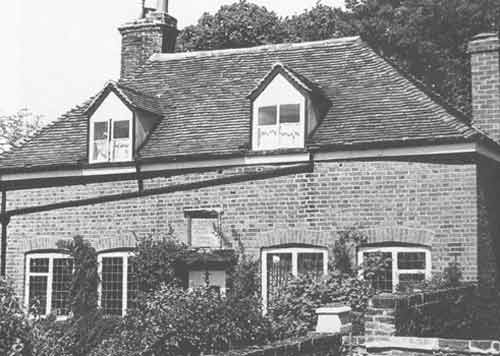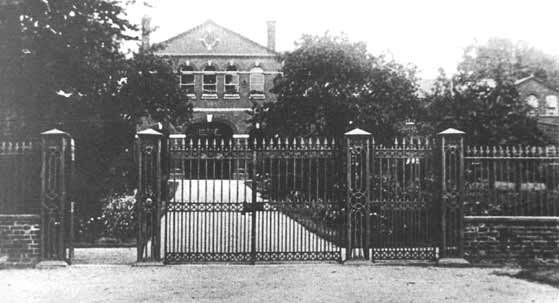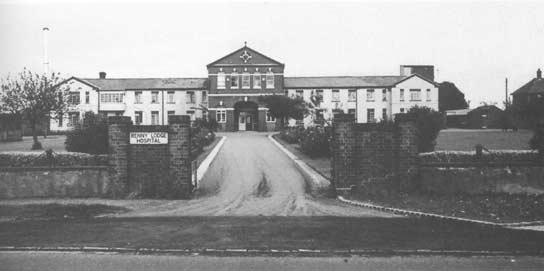 |
 |
|
| For information about the Bridewell Prison in London, see below.
The Bridewell or House of Correction was known as the Workhouse. Newport Pagnell had two such places at different periods. One built by Samuel Christie was located off Silver Street, to the rear of the Working Men's Club. |
||
 |
||
|
The second was located in London Road at the junction with North Crawley Road, brought about by the introduction of the Poor Law Act of 1834, when parish workhouses were to be closed and large union workhouses were to be built in the larger towns. |
||
 |
||
Built in 1836 it was known as Renny Lodge, or the Union Workhouse, and could accommodate a large number of inmates with men and women separated including husbands and wives. In 1889 some 185 tramps were admitted and one of the forms of punishment was stone breaking. This building later became a hospital (see picture below) and was demolished in 1994 and the site remains empty to date. |
||
 |
||
|
Records in the cell book dating from 1904 held in Newport Pagnell police museum show a large number of crimes committed at Renny Lodge, the Union Workhouse, varying from refusal to work, criminal damage to a cell, tearing up their clothing in the hopes of getting a new outfit, to strong language. All resulted in terms of Hard Labour from seven to fourteen days. Many references show the prisoner as of no fixed abode, and others found sleeping in chicken houses and in haystacks. Has there been any change over the years?
From a book Hughson's History of London dated pre-1807 can be gleaned the possible origins. Bridewell Hospital was built on the site of the ancient palace of several English monarchs in London. As early as the reign of King John it had been formed out of the remains of a castle, which stood near the river Thames. In 1087, William I gave many of the choicest materials towards rebuilding St. Paul's Cathedral, which had been destroyed by fire. The building was neglected until Cardinal Wolsey made it his habitation in 1522, and it was rebuilt at great cost from funds extorted from all the Abbotts, and heads of religious houses English and foreign. The outcome of this extraction of wealth resulted in hordes of beggars, vagabonds and poor and impotent persons. This brought about an Act in the reign of Edward V1 " that any person who lived idle and loiteringly for the space of three days, being brought before two justices, should be marked with a hot iron on the breast with 'V' for vagabond, and be judged a slave to the person who brought him for two years, and if he absented himself fourteen days in the two years he could be marked with 'S' on the forehead or ball of the cheek and adjudged a slave to his master for life. As a result of efforts by Bishop Ridley of London, in a letter to Sir William Cecil, the King's secretary, the decayed king's palace of Bridewell was given to the mayor, commonalty, and citizens of London in 1553. The conditions were that it was to be a working house for the poor and idle persons of the city, and to be a house of correction. Due to the death of King Edward dying shortly after the grant was made, it was a further two years before possession was confirmed by Queen Mary. The building was entirely destroyed by fire in 1666, and rebuilt in 1668, and consisted of two courts designed not only for prisons and places of hard labour and punishment, but also for artmasters to teach apprentices various trades. The hospital was used as a house of correction for all strumpets, night-walkers, pickpockets, vagrants and incorrigible and disobedient servants. For more information about the Bridewell prison in London, click here |
||